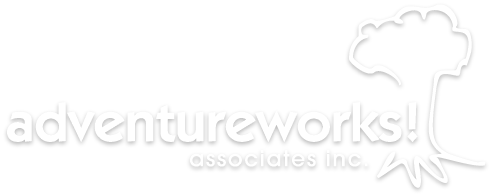Staffing Your Adventure Program For COVID Times
/With the new year come and the old year gone, organizations have naturally turned their thoughts to the upcoming season. Despite the fact that some regions are still dealing with stay-at-home orders, the emails we are receiving tell us that the general expectation out there is that challenge courses will operate on a much wider scale than was possible in 2020. This return to operations, however, should NOT be approached as a return to staffing is usual. There are some key differences to consider.
People’s skills have deteriorated as a result of being on hiatus. When you haven’t done something for over a year, you’re going to be rusty. Whether it’s tying knots, climbing with a cable grab, or transferring life safety systems at height, staff are going to need a re-fresher. This re-fresher training is particularly important because of the safety sensitive nature of many of these tasks – making an error is NOT an option. Make sure you schedule time both for re-fresher training and additional supervised practice.
Bench strength has been depleted. Annual staff turnover is a reality at most organizations. The difference this year is that the 2020 cohort is likely missing entirely. As a result, the person responsible for mentoring adventure program staff in 2021 may not have received any mentoring themselves. They may also not have a supervisor they can go to with technical questions. As an error management strategy, organizations should seriously consider having co-supervisors or co-directors to at least partially address this experience gap. Two heads are better than one. This will also cover you in case someone needs to self-isolate for 10-14 days.
The skills required have increased. A return to operation is going to require adjustments for COVID safety measures. Staff are going to have to be able to harness participants while standing 2 m away. Pre-climb checks are going to need to be executed without staff tugging on a participant’s harness or squeeze-checking their carabiner. To be clear, these checks still need to happen – the difference is that they are going to need to happen visually and under verbal instruction. To use a hockey analogy, you’re going to need first string quality on the ice all the time and that means developing a plan for advancing staff proficiency.
The time required has increased. Staff are going to need additional time to adjust to COVID operations. They will need to familiarise themselves with new cleaning procedures, unfamiliar briefing approaches, and novel activity variations. Yes, you absolutely can use your Whale Watch in all sorts of safe and effective ways. No there isn’t a chip that can just be implanted in staff brains to instantly provide them with all of these updates. Adventureworks has provided much of this information in our newsletters but your staff will need time to read it, digest it, and adapt it to their specific context. They are also going to need time to go shop for pool noodles, lay out poly-spots, and wipe down carabiners. Plan to provide prep time before and during the season.
Cognitive load has increased. Finally, one of the things that this blog has hopefully highlighted is that there is going to be a substantial increase in the attention and execution required by adventure program staff. Organizations can help staff reach this level of performance by limiting other simultaneous responsibilities. Consider reducing group size down to 8 or no more than 10 participants. Assign a different staff member to monitor and enforce physical distancing so that adventure program staff can focus on life safety operations rather than whether Billy is poking Tommy with a stick. Consider a having dedicated COVID safety officer whose job it is to deal with hand sanitizer, masks, and the rest of it.
Operating your adventure program in 2021 is going to depend on employing highly skilled staff. Start your planning today.
Written by Kathy Haras, Ph.D


